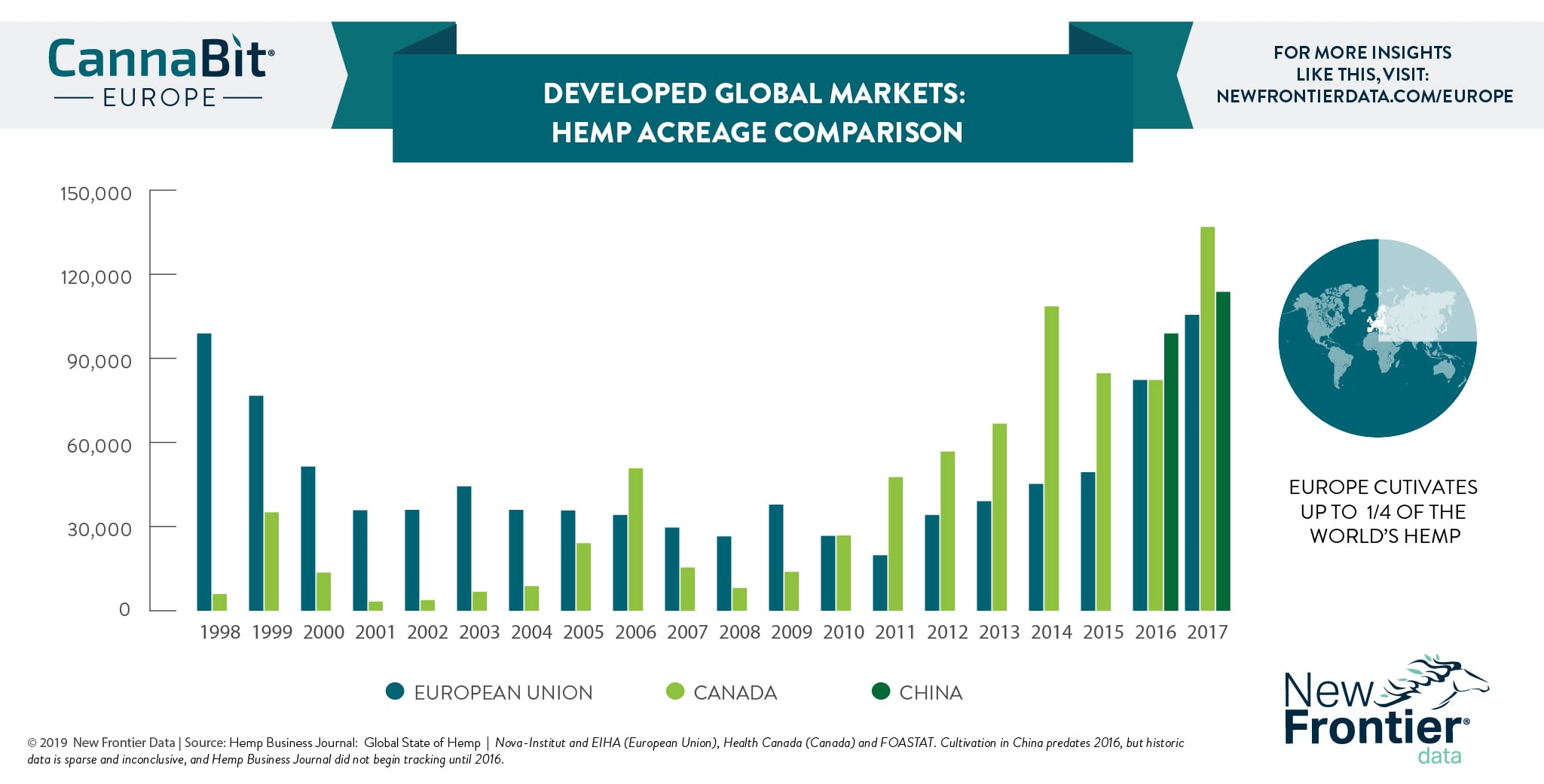By New Frontier Data Europe
Hemp cultivation in Europe is well established with a tradition dating back hundreds of years. Currently, it is estimated that Europe cultivates up to 25% of the world's hemp. France alone accounted for 40% of the European production, with at least 20 other countries contributing to the European Union's total.
European hemp cultivation has been on a major upswing for the last several years, as producers and consumers become more excited about new usage opportunities.

Europe has developed a strong processing infrastructure, and a finished-goods industry based on using hemp fibers in industrial applications. Paper and pulp, along with biocomposites (used in the automotive industry, and for insulation materials) are Europe's most established uses for hemp fibers. Hemp shivs, byproducts of the fiber extraction process, also have long-established European commercial uses – primarily as animal bedding, but also increasingly for use in the construction industry, especially for insulation.
In the last several years, along with the tremendous increase in overall cultivation, the European market has experienced a great surge in its use of seeds and flowers, along with associated applications of those hemp components. According to the European Industrial Hemp Association (EIHA), the EU produced 11,500 metric tons of hemp seeds in 2015 (the last year for which data is available), yet it imported another 10,000 metric tons, primarily from China.
While most hemp seeds a decade ago were used for animal feed, especially for birds and fish, EIHA now estimates that 60% of the crop is used for human food, with only 40% of it for animal feed. That shift is expected to continue as Europeans become more aware of the benefits of hemp and its omega fatty acid profile. The EU has also seen a major increase in the last four years in the harvesting of hemp flowers and leaves for medical and food applications (primarily around CBD).
CBD sales are flourishing in some European countries despite confusion around European Food Safety Authority classification of CBD as a "novel food". Some countries such as the U.K. and Italy have a hands-off approach and are not enforcing these guidelines, whilst other countries (e.g., France, Austria, and Spain), are clamping down on CBD sales.
CBD products are enjoying wide distribution in Europe – from tobacco shops and vape stores, to traditional supplement stores like U.K.-based Holland and Barrett. Such products are also in convenience stores, supermarkets, and online retailers, including Amazon.
Unfortunately, country-by-country regulations can also hamper uniformity about which parts of the hemp plant may be used. In Germany and Romania, flowers and leaves can be harvested, but in the U.K., France, and the Netherlands, only the fibers and seeds can be used.
Europe's hemp market, like most global markets, is working through some growing pains, but while doing so it is also quickly building a strong, diverse hemp industry for the future.
The post Hemp Cultivation in Europe appeared first on New Frontier Data.
Image Sourced from Pixabay
© 2025 Benzinga.com. Benzinga does not provide investment advice. All rights reserved.
Comments
Trade confidently with insights and alerts from analyst ratings, free reports and breaking news that affects the stocks you care about.